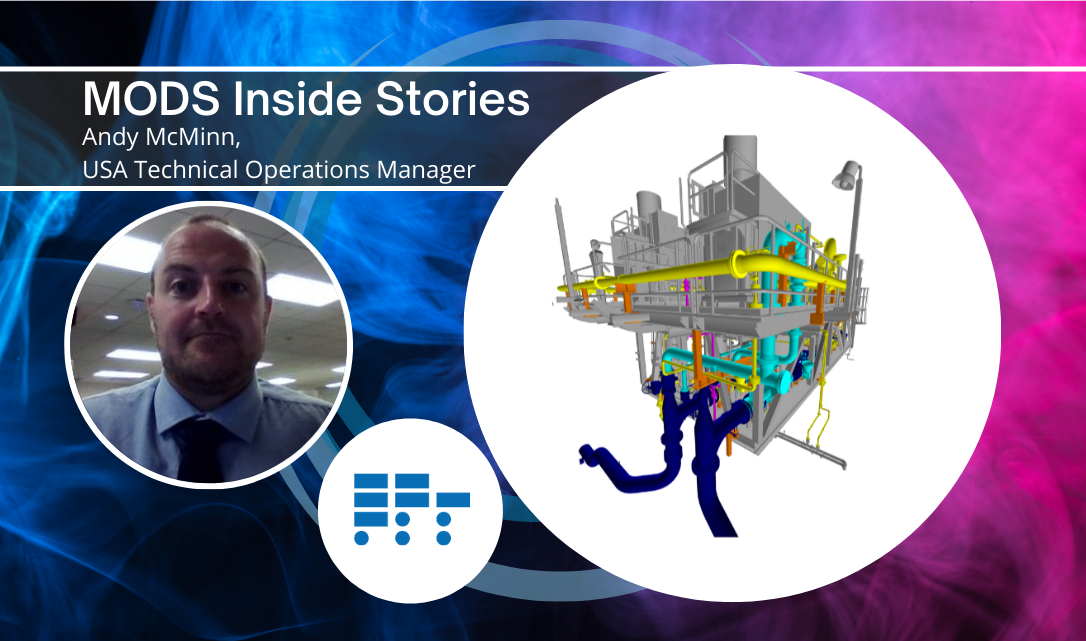Digital Completions in Plant Modifications and Upgrades
Unlike greenfield or any new build construction projects, plant modifications and upgrades present a unique set of challenges. Work is carried out...

The Asset management software market is well-trodden terrain. Technology in this undulating landscape has had an incredible journey especially over the past 20 years. The first tentative steps into the area of Asset management were taken in the 1960s but it wasn’t until the production boom in the 1990s, that in turn demanded more from software systems, that solutions such as ERP (Enterprise Resource Planning) and EAM (Enterprise Asset Management) software came about.
Organizations were demanding more from their data and from their valued assets; isolated, departmental, paper-based management was a dead-end. It made economic sense to manage assets across the whole organization, the ‘Enterprise’, and include the associated areas such as labour, inventory, maintenance, finance, life-span – the list goes on. Today, EAM is a vital business tool and holds huge strategic value. Cloud-based solutions and 4.0 software advances allows companies to be more agile and adapt to today’s ever-changing landscape. EAM systems are no longer stand-alone programs, as they can be linked to other organizational-wide systems and accessible world-wide, a destination only dreamt of back in nineties.
With much scope for growth, the market is more open to solutions that enable free data flows across different platforms. This collaborative necessity has increased the number of partnerships between vendors resulting in clients having multiple options to choose from.
There are considerable differences between the types of software in Asset Performance management software, but the ultimate goal of managing assets within the industry, to serve their customers' needs and remain economically viable remains the same.
There are five different sections within this landscape:
These are all being used at different levels by a range of diverse clients to help solve their Asset management needs.
Asset information management (AIM) is an area of growing importance to many firms. Without AIM organizations are unable to control and utilize the information or data collected from all areas of the business, not just the tangible areas such as production. In short – Information is an asset, and a valuable one at that.
In the Energy industry, the focus is on using a Digital Twin to ensure that digital ‘reality’ matches the physical reality. This ensures that data and registers between multiple systems do not deviate, which in turn, allows comprehensive control, improved decision making and ultimately increased profit margins as accuracy in all areas is available.
The industry demands solutions that ensure interoperability between disparate systems, software systems, and techniques to ensure the data is correct and kept up to date. The performance of Energy assets can only be guaranteed when critical drivers, such as ‘informed decisions’ supported with ‘improved information flow’, are in place.
Many offerings are aligned with BIM, PAS, and ISO Quality Assurance standards to provide a view of data that gives accurate and reliable information to operations, maintenance, and engineering while proving accountability to legislative standards. A good Asset information management solution should maximize collaboration by removing bottlenecks effectively across Information, Operations and Engineering technology disciplines and the entire lifecycle of assets.
Asset analytics, Maintenance, Planning, Scheduling, and Workforce management software make up the Asset maintenance space. This is one of the highest costs in Asset management and should be recognized as a priority premium to be paid for consistency, reliability, and the avoidance of unplanned, costly downtime.
A strategic maintenance investment should equal improved reliability, competitive advantage, and growth. In most instances, what happens in reality is, the emphasis is on fixing issues quickly without any thought to improving reliability or reducing risk. Perhaps the real view of Maintenance must be a holistic one, where maintaining the ‘wellbeing’ of the facility as a whole, is the path that leads to Operational Excellence.
Maintenance planning and scheduling have been historically looked after by AAM (Advanced Asset Management) software, or a CMMS(Computerized Maintenance Management System) designed to simplify Maintenance management; sometimes, they are also referred to as Enterprise Asset Management (EAM) software. What is becoming more commonly found in this field is ‘Workforce’ Management software designed to optimize the activities that are being conducted on-site. As the name implies, the workforce and related schedules are optimized however the key feature is the management of ‘proof of delivery’ to notify when work has been completed.
This software plays an integral role in organizations achieving their goals. In the Petrochemical sector, one of the most dangerous in the Energy industry, Asset performance is strongly linked with safety and environmental legislation. Software is designed to maximize mission-critical decision-making by increasing visibility of an assets’ historical, real-time, and predicted future state. Every operator wants and needs their assets to be reliable, efficient, and available but also have minimal running and inspection costs, all while maintaining safety and environmental legislative parameters.
By mitigating downtime stoppages, unscheduled repairs, high maintenance costs and reducing risks, Asset Performance software delivers on capital investment, especially when the alternative is literally disastrous - financial and physical. The software collects and produces data and analytics, that together, proactively monitor assets assisting in the planning, inspection, control, and maintenance of an organizations’ valuable investment.
Asset Investment management software is about being able to optimize both Operational and Capital expenditure. This software solution helps operators decide where and when to invest in their businesses and to improve capital efficiency, shareholders’ value and manage risk. The value in this is enormous; ageing assets requiring refurbishment or replacement often compete for funding, with Asset Investment management software, the data harnessed details operational, replacement and maintenance costs allowing for better informed decision-making and strategy building.
With constant demands on adding capacity, increasing renewables and further digitization of existing assets, this software is a critical tool. In addition, this software has the ability to compare the value of different projects to build an optimized Capital plan and then react to budget and resource scenario changes. Reports can be generated quickly and automatically, back-office administration is improved, and cost and operational efficiency is optimized; an overall Planning ‘game-changer' for operators.
This vital piece of software ensures the processes, or pre-determined and regulated steps that must be taken while operating, are adhered to. Constant monitoring of data is also used to ensure that assets avoid being damaged, it helps improve safe operations and offers a real-time view of workers' risk within an industrial facility.
Gaining valuable insights into how risks can be avoided is possible with the right solution in place. Process Safety management software establishes a unified way of identifying and assessing risk, maintaining controls, and sharing risk-related information. A more detailed and comprehensive understanding is therefore readily available to managers who in turn can control risk, maintain compliance, engage employees, and manage change; ultimately keeping their teams working together safely and productively under one software management program.
Asset management is a staple term in the world of maintenance and reliability. Organizations with major Energy sector facilities have been practicing Enterprise Asset Management (EAM) for many years. However, the most successful ones today prize a technology partnership provider with smarter Asset management software solutions knowing this is the only way to stay competitive, economically viable and compliant with regulations.
As energy costs continue to rise and Risk management becoming a larger part of the Operating and Maintenance budget, software companies like MODS are stepping up to meet the challenge. MODS provide a full-compliment of advanced tools that further support maintenance, control, decision-making and even activate workforce behavioral change. The Asset management software landscape may be vast and varied however MODS’ proven software solutions are already laying a golden path towards Operational Excellence.
Best-of-breed Asset Management tools will:
Are you in search of asset management software? Check out our  .
.

Unlike greenfield or any new build construction projects, plant modifications and upgrades present a unique set of challenges. Work is carried out...

Turnarounds and shutdowns are among the most critical—and stressful—phases in the management and operation of industrial assets. These planned...

Offshore decommissioning and asset retirement present significant logistical, regulatory, safety, fiscal and reputational challenges. The process of...

Heading the MODS team in the USA is Andy McMinn. MODS partnership with GIS (Grand Isle Shipyard), a full-service EPC contractor based out of the...

In the current business environment, organizations are vying to remain competitive and embrace technology to manage business risks and ensure long...

The visionary Steve Jobs once said: Innovation distinguishes between a leader and a follower.